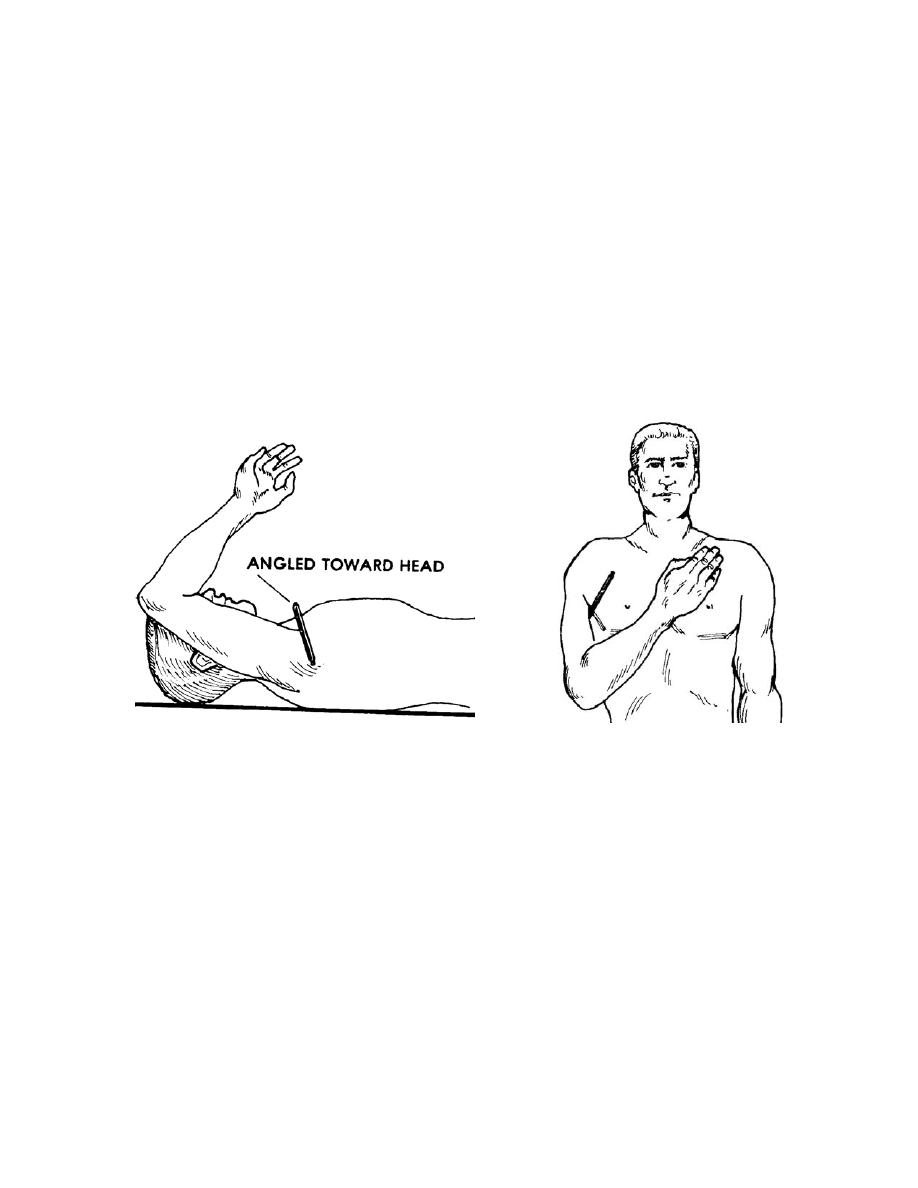
(2) Pat the patient's underarm with gauze pads in order to dry the area.
Excessive moisture will cool the skin and could result in an inaccurate temperature
reading. Be sure to pat the area dry rather than rubbing the area. Rubbing the axillary
area could cause an inaccurate reading due to the heat caused by friction (rubbing).
(3) Place the bulb of the thermometer in the center of the axilla. Angle the
thermometer so that the stem is pointed up and in the direction of the patient's head
(figure 2-14).
(4) Have the patient bring his arm down so that his upper arm is against the
side of his chest and his forearm and hand lie across the top of his chest (figure 2-15).
Having the upper arm against the side of the chest forces the air out of the axillary area.
Air in the axillary area can cool the area and result in a lower temperature reading. The
arm position also secures the thermometer and keeps the bulb in the center of the
axilla.
Figure 2-14. Positioning a thermometer
Figure 2-15. Patient with
to take an axillary temperature.
thermometer
secured in axillary.
h. Wait Ten Minutes. Leave the thermometer in place for at least ten minutes
in order to obtain an accurate temperature reading. If the patient is capable of keeping
the thermometer in place without your assistance, you may use this time to do other
tasks such as taking his pulse and breathing rates.
i.
Remove Thermometer.
(1) Tell the patient that you are going to remove the thermometer. As you
talk to the patient, grasp the stem end of the thermometer with thumb and fingers of one
hand. (Grasping the thermometer keeps the thermometer from falling if he moves his
arm before you are ready.)
MD0531
2-32


 Previous Page
Previous Page
